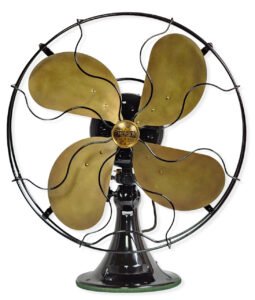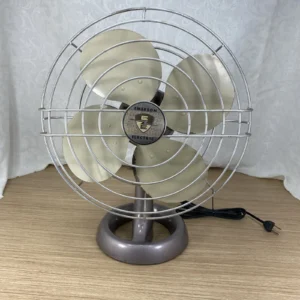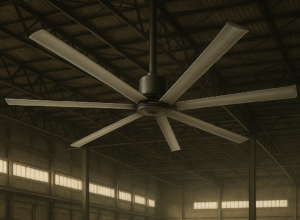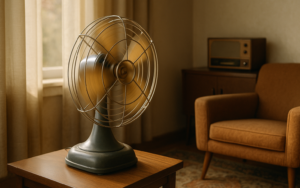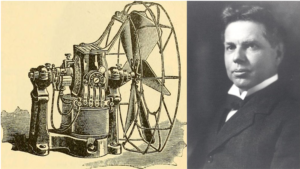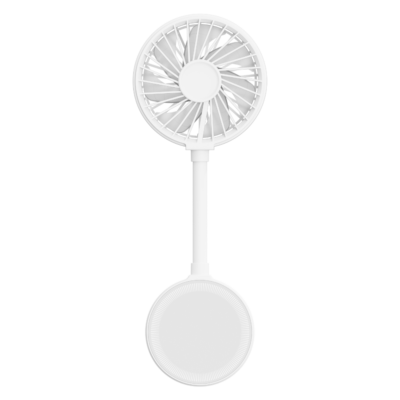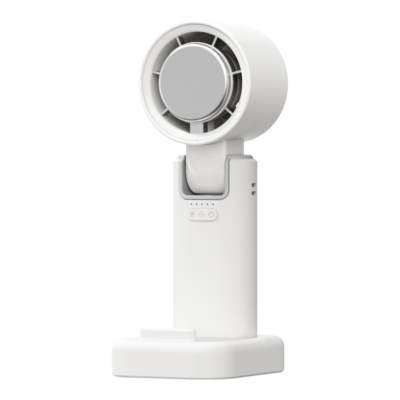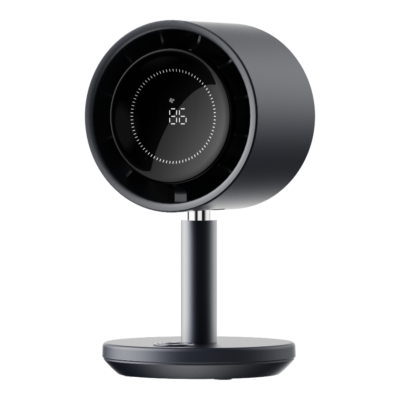In the 21st century, as climate concerns intensify and smart living becomes the norm, cooling technology is undergoing a radical reinvention. No longer limited to spinning blades and basic airflow, fans have evolved into intelligent, energy-efficient systems that adapt to user needs, integrate seamlessly with smart home ecosystems, and align with global sustainability goals. At the same time, there is a growing emphasis on sustainable cooling solutions designed to minimize environmental impact while maintaining optimal comfort and performance.
Smart Fan Technologies
Integration with Smart Home Systems
Smart fans are now a core component of modern smart homes, offering seamless integration with platforms like Amazon Alexa, Google Home, and Apple HomeKit. Users can control fan speed, direction, and lighting through voice commands or mobile apps, adding a layer of convenience and accessibility. These apps also enable scheduling, remote operation, and real-time monitoring of energy usage, allowing for greater control and efficiency.
Many of these smart systems now incorporate air circulator fans, which are engineered to deliver consistent, whole-room airflow. Their ability to reduce hotspots and maintain balanced temperatures makes them a smart complement to connected home environments.
Energy Efficiency and Automation
Engineered for sustainability, smart fans typically utilize energy-saving DC motors that consume significantly less power than traditional AC models. Air circulator fans stand out for their ability to distribute air more uniformly, minimizing the need for high-speed operation or supplementary cooling devices. This design not only enhances comfort but also significantly improves energy efficiency.
Advanced automation features allow the fan to respond intelligently to environmental conditions, adjusting speed or turning off when a room reaches a desired temperature. This ensures optimal comfort while reducing unnecessary energy consumption, aligning with broader goals of energy efficiency and smart living.
Sustainable Cooling Solutions
Renewable Energy Integration

Sustainable cooling is increasingly aligning with renewable energy adoption, particularly through the integration of solar power into residential and commercial systems. By harnessing solar energy to power fans, air conditioners, or thermal cooling units, this approach reduces dependency on fossil fuels, lowers greenhouse gas emissions, and contributes to long-term energy cost savings. Some systems also use solar-powered batteries to enable uninterrupted cooling even during non-sunlight hours, further enhancing efficiency.
Innovative Cooling Technologies
Emerging technologies are reshaping the landscape of eco-friendly cooling. One notable advancement is elastocaloric cooling, which leverages shape memory alloys to generate cooling through a solid-state process, eliminating the need for traditional refrigerants like HFCs that contribute to climate change.
Recognized as a promising innovation for the near future, elastocaloric systems offer a safer, more sustainable alternative by providing high efficiency with minimal environmental impact. Other innovations, such as radiative cooling materials and magnetocaloric technologies, are also under active development, signaling a shift toward cleaner, more efficient cooling solutions.
District Cooling Systems
District cooling systems offer a highly efficient and sustainable approach to urban climate control by providing centralized cooling to multiple buildings from a single plant. This centralized model reduces the need for individual cooling units, leading to significant energy savings, lower greenhouse gas emissions, and reduced maintenance costs.
Many systems utilize natural resources such as seawater or deep lake water for heat exchange, significantly cutting down on potable water use and minimizing the need for chemical refrigerants. By optimizing scale and resource use, district cooling plays a vital role in supporting greener urban infrastructure and climate-resilient development.
Modern Fan Designs and Materials
Eco-Friendly Materials

Contemporary fan designs increasingly prioritize sustainability by incorporating eco-friendly materials such as bamboo, recycled plastics, and low-impact metals. This shift reflects a broader commitment to reducing environmental footprints through responsible sourcing and manufacturing. By choosing renewable and recycled components, manufacturers align with global sustainability goals and cater to environmentally conscious consumers.
Customization and Multi-Functionality
Today’s fans are more than just cooling appliances. They are customizable lifestyle solutions. Consumers can choose from various blade lengths, finishes, and styles to complement their interior decor. Beyond aesthetics, many modern fans feature integrated technologies such as built-in speakers, Wi-Fi extenders, LED lighting, and air purifiers. These multi-functional innovations enhance comfort, convenience, and connectivity, reflecting the growing demand for products that blend performance with smart living.
Conclusion
The 21st century has redefined what cooling means in a world shaped by smart living and environmental urgency. Fans have evolved from simple appliances into intelligent, efficient, and sustainable technologies that serve both individual comfort and global goals. With innovations like air circulator fans leading the charge, the future of cooling is not only smarter but also more sustainable and deeply attuned to how we live today.
Ready to experience the next step in the evolution of fans?
From the rise of electric fans to the game-changing innovations of the 21th century like oscillation, speed controls, and energy-saving designs, fans have long been essential to modern living. Now, that same spirit of innovation continues with a smarter, more efficient solution for today’s homes.

JustZan’s range of Air Circulator Fans shows how far modern cooling has come. From compact desk fans to sleek standing models, each one is designed to deliver smooth, consistent airflow with whisper-quiet performance and smart, space-saving features. Whether you’re working, relaxing, or getting a good night’s sleep, there’s a fan that fits seamlessly into your lifestyle.
Browse the full collection today and Shop the perfect fan for your lifestyle.
















